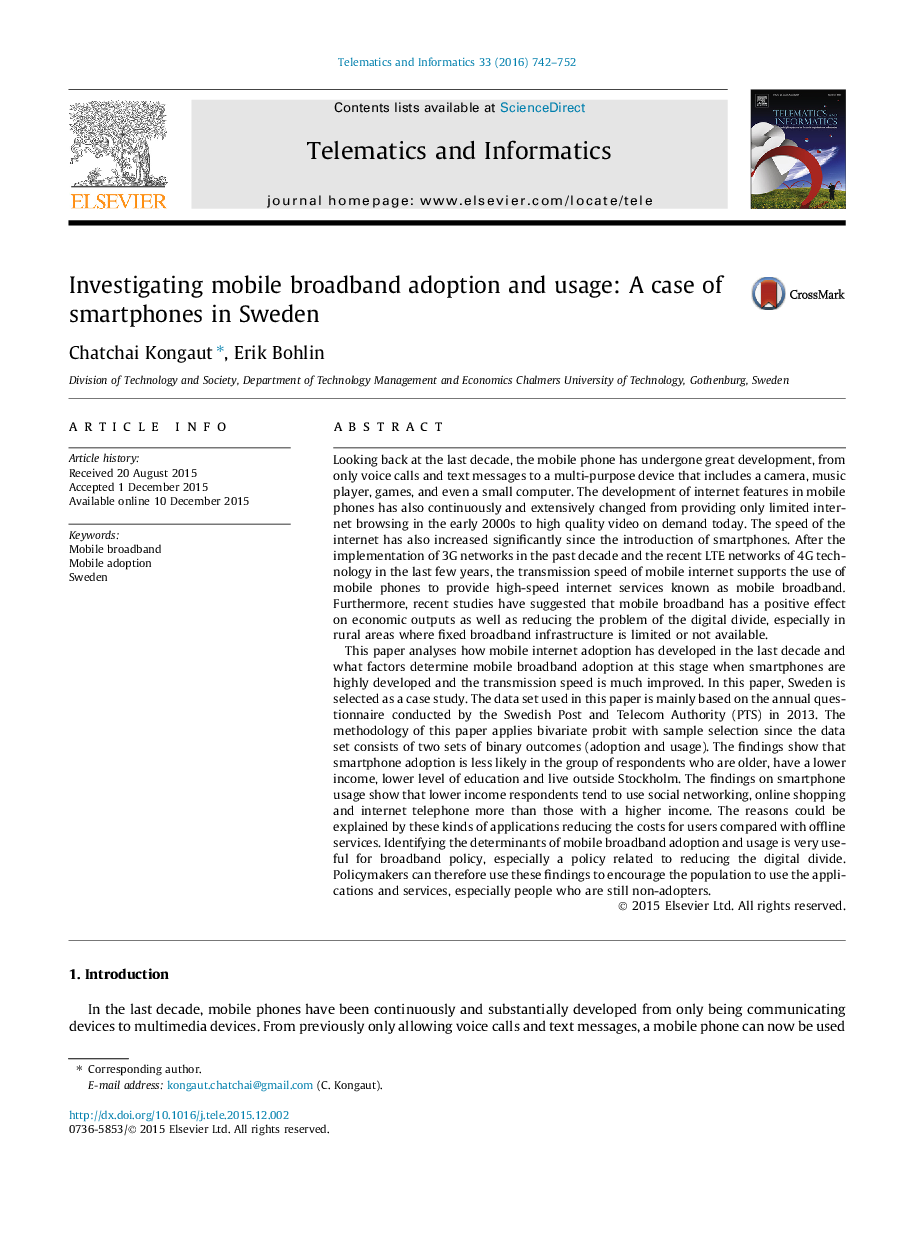| کد مقاله | کد نشریه | سال انتشار | مقاله انگلیسی | نسخه تمام متن |
|---|---|---|---|---|
| 465263 | 697532 | 2016 | 11 صفحه PDF | دانلود رایگان |
• Giving Swedish mobile internet overviews from early-2000s until recent time.
• Discussing on previous empirical studies of broadband adoption and usage.
• Providing regression analysis of smartphone adoption and usage in Sweden in 2013.
• Identifying the determinants of adoption and usage is useful for broadband policy.
Looking back at the last decade, the mobile phone has undergone great development, from only voice calls and text messages to a multi-purpose device that includes a camera, music player, games, and even a small computer. The development of internet features in mobile phones has also continuously and extensively changed from providing only limited internet browsing in the early 2000s to high quality video on demand today. The speed of the internet has also increased significantly since the introduction of smartphones. After the implementation of 3G networks in the past decade and the recent LTE networks of 4G technology in the last few years, the transmission speed of mobile internet supports the use of mobile phones to provide high-speed internet services known as mobile broadband. Furthermore, recent studies have suggested that mobile broadband has a positive effect on economic outputs as well as reducing the problem of the digital divide, especially in rural areas where fixed broadband infrastructure is limited or not available.This paper analyses how mobile internet adoption has developed in the last decade and what factors determine mobile broadband adoption at this stage when smartphones are highly developed and the transmission speed is much improved. In this paper, Sweden is selected as a case study. The data set used in this paper is mainly based on the annual questionnaire conducted by the Swedish Post and Telecom Authority (PTS) in 2013. The methodology of this paper applies bivariate probit with sample selection since the data set consists of two sets of binary outcomes (adoption and usage). The findings show that smartphone adoption is less likely in the group of respondents who are older, have a lower income, lower level of education and live outside Stockholm. The findings on smartphone usage show that lower income respondents tend to use social networking, online shopping and internet telephone more than those with a higher income. The reasons could be explained by these kinds of applications reducing the costs for users compared with offline services. Identifying the determinants of mobile broadband adoption and usage is very useful for broadband policy, especially a policy related to reducing the digital divide. Policymakers can therefore use these findings to encourage the population to use the applications and services, especially people who are still non-adopters.
Journal: Telematics and Informatics - Volume 33, Issue 3, August 2016, Pages 742–752
